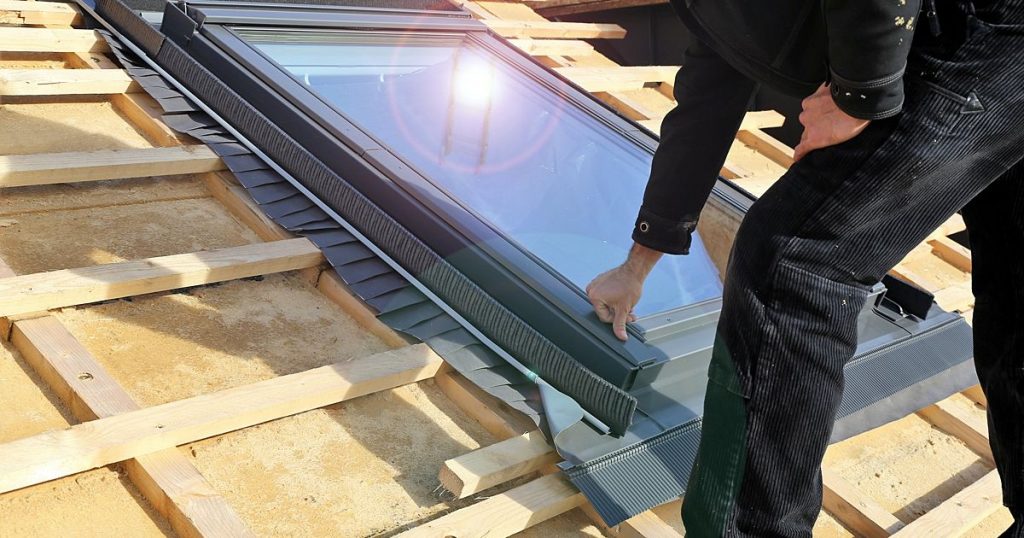Solar Roof Ventilation for Homes and Sheds
Solar roof ventilation is a great way to keep your home cool in the summer and warm in the winter. It’s also a great way to reduce your energy bills. In this blog post, we will explore the benefits of solar roof ventilation for homes and sheds. We will also provide some tips on how to choose the right solar roof ventilation system for your needs. ###

What is Solar Roof Ventilation?
Solar roof ventilation is a process by which hot air is drawn out of a building through the use of solar-powered fans. This type of ventilation can be used in both residential and commercial buildings and is an increasingly popular means of cooling a space while also reducing energy costs. Solar roof ventilation systems work by drawing hot air out of the building and into the atmosphere, where it can dissipate naturally. This process helps to cool the building while also preventing the build-up of moisture and condensation that can lead to mould and mildew growth.
Why do we need to ventilate our roof cavities?
There are a few key reasons for ventilating your roof cavity:
- To protect your home from heat damage – Without adequate ventilation, heat can build up in your roof cavity and cause structural damage.
- To prevent condensation and mould growth – If the air in your roof cavity is too humid, it can lead to condensation which can then lead to the growth of mould and mildew.
- To improve the efficiency of your air conditioner – If your air conditioner has to work harder to cool down your home, it will use more energy and cost you more money. By ventilating your roof cavity, you can help keep your home cooler and reduce the strain on your air conditioner.
What are the traditional options for ventilating a roof?
There are a few traditional options for ventilating a roof. The most common is to install ridge vents or soffit vents. Ridge vents are installed along the peak of the roof and allow hot air to escape through the top of the roof. Soffit vents are installed in the soffits, which are the spaces between the rafters and the exterior walls of the house. These vents allow cool air to enter the attic and help to keep it cooler in the summer. Another option is to install gable end vents, which are installed in the gable ends of a house. These vents also allow hot air to escape and can be used in conjunction with other types of vents.
What is solar roof ventilation?
Solar roof ventilation is a way to ventilate your home or shed using the power of the sun. Solar-powered fans and vents work to remove hot air and moisture from your attic or other enclosed space, helping to keep your home cooler in the summer and drier in the winter. Solar roof ventilation can be a great way to reduce your energy bills and make your home more comfortable all year round.
How does Solar Roof Ventilation work?
Solar ventilation is the use of solar panels to power a fan that ventilates an area. Solar ventilation can be used for a variety of purposes, including reducing heat build-up in an area, reducing moisture levels, and improving air quality.
Solar ventilation systems typically consist of three parts: solar panels, a control unit, and a fan. Solar panels are used to collect energy from the sun and convert it into electricity. The control unit regulates the flow of electricity from the solar panels to the fan. The fan then uses this electricity to create airflow and ventilate the area.
Solar ventilation can be used in both homes and sheds. In homes, solar ventilation can be used to reduce heat build-up and improve air quality. In sheds, solar ventilation can be used to reduce moisture levels and improve air circulation.
What are the benefits of Solar Roof Ventilation?
There are numerous benefits to solar roof ventilation for both homes and sheds. Some of the key benefits include:
-Reduced energy costs: Solar roof ventilation can help to reduce your energy costs by providing free, natural ventilation. This can help to keep your home cooler in the summer and warmer in the winter, reducing your need for air conditioning and heating.
-Improved indoor air quality: Solar ventilation can help to improve the quality of indoor air by helping to remove pollutants and excess moisture. This can create a healthier environment for both you and your family.
-Lowered carbon footprint: Solar roof ventilation can help to lower your carbon footprint as it does not require any electricity to operate. This means that you will be using renewable energy which is much better for the environment.
How to install Solar Roof Ventilation
Assuming you have already purchased your solar roof ventilation system, the next step is installation. Here is a detailed guide on how to install solar roof ventilation:
- First, identify where you want to install the solar roof vent. It is important to choose an area that gets direct sunlight for most of the day and is not obstructed by trees or other objects.
- Once you have chosen the location, mark the four corners of the square or rectangle where the vent will be installed.
- Cut a hole in the roof at each of the marked corners, using a power drill and jigsaw. The holes should be large enough to accommodate the mounting brackets that come with your solar roof vent system.
- Affix the mounting brackets to the underside of the roof at each corner, using screws and washers (included in your kit). Be sure to use corrosion-resistant screws and washers if your roof is made of metal.
- Place the solar panel unit on top of the mounting brackets and secure it in place with screws (also included in your kit). Again, use corrosion-resistant screws if necessary.
- Connect the electrical wiring from the solar panel unit to your home’s electrical system according to the instructions provided with your system. This typically involves running wires through an existing opening in your home’s attic space and connecting them to an unused circuit breaker or fuse box slot. If you are not comfortable
Solar Roof Ventilation FAQs
- What are solar roof vents?
Solar roof vents are devices that use the power of the sun to ventilate your home or shed. They are an environmentally friendly way to keep your home cool and comfortable, and can also help to prolong the life of your roof by preventing heat damage.
- How do solar roof vents work?
Solar roof vents work by using the heat of the sun to drive a small fan, which then creates airflow through your home or shed. This helps to remove hot air from the inside, and can also stop moisture build-up which can lead to dampness and condensation problems.
- Are solar roof vents effective?
Yes, solar roof vents are an effective way to ventilate your home or shed. They are especially effective in hot weather when the sun is at its strongest. Solar roof vents can also help to improve air quality by removing pollutants and allergens from the air inside your home.
- Do I need more than one solar vent?
It depends on the size of your home or shed and the amount of ventilation you need. In most cases, one solar vent will be sufficient, but you may need more if you have a large area to ventilate or if you live in a particularly hot climate.
- How much does a solar roof vent cost?
Solar roof vents vary in price depending on their size and features, but you can expect to pay around $100
Conclusion
Solar roof ventilation is a great way to keep your home or shed cool during the hot summer months. It’s easy to install and doesn’t require any electricity, which makes it an environmentally-friendly option. If you’re looking for a way to beat the heat this summer, solar roof ventilation might be the perfect solution for you.



